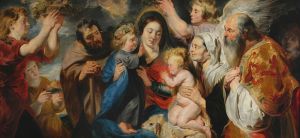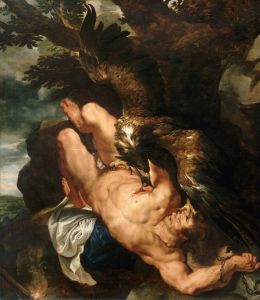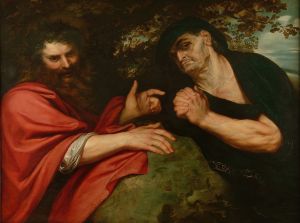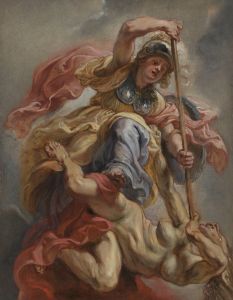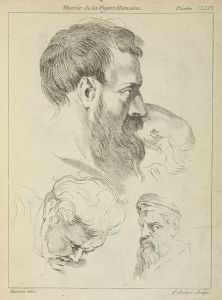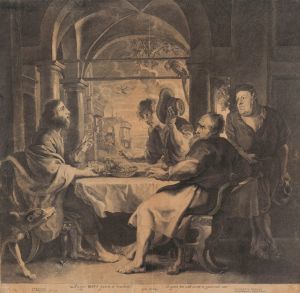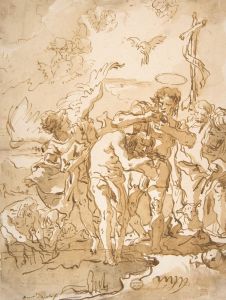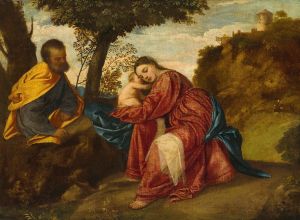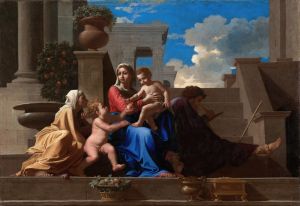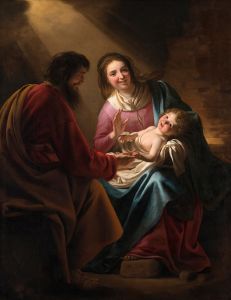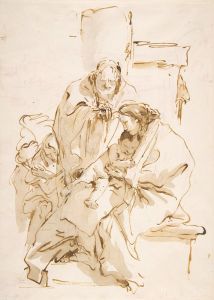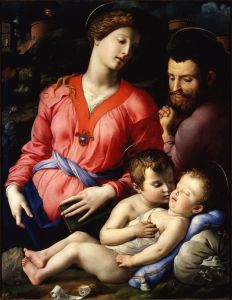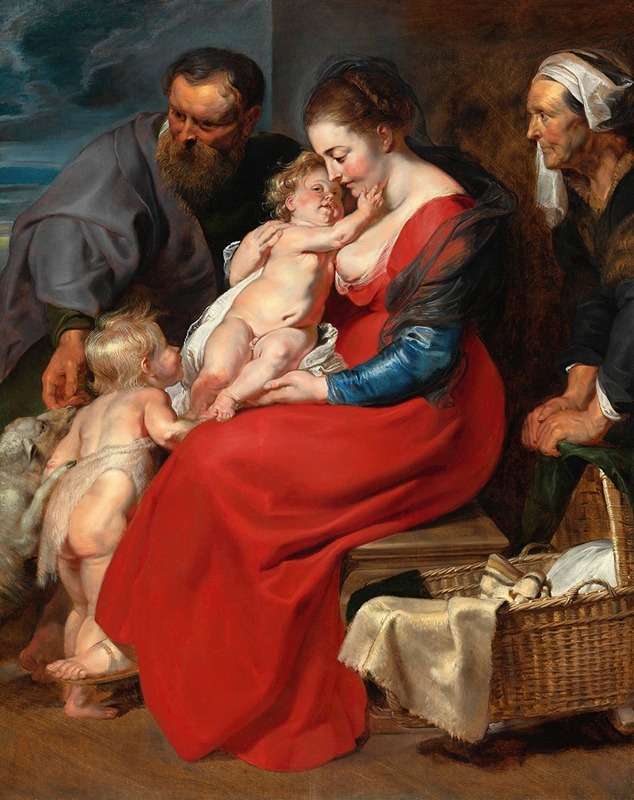
The Holy Family with Saints Elizabeth and John the Baptist
A hand-painted replica of Peter Paul Rubens’s masterpiece The Holy Family with Saints Elizabeth and John the Baptist, meticulously crafted by professional artists to capture the true essence of the original. Each piece is created with museum-quality canvas and rare mineral pigments, carefully painted by experienced artists with delicate brushstrokes and rich, layered colors to perfectly recreate the texture of the original artwork. Unlike machine-printed reproductions, this hand-painted version brings the painting to life, infused with the artist’s emotions and skill in every stroke. Whether for personal collection or home decoration, it instantly elevates the artistic atmosphere of any space.
"The Holy Family with Saints Elizabeth and John the Baptist" is a painting by the renowned Flemish Baroque artist Peter Paul Rubens. Rubens, born in 1577 in Siegen, was a prolific painter known for his vibrant compositions, dynamic figures, and masterful use of color. His works often depicted religious and mythological subjects, and he was a leading figure in the Baroque movement, which emphasized movement, color, and sensuality.
This particular painting, "The Holy Family with Saints Elizabeth and John the Baptist," is an exquisite example of Rubens' ability to convey religious themes with emotional depth and vivid realism. The painting portrays the Virgin Mary, the Christ Child, Saint Joseph, Saint Elizabeth, and the young Saint John the Baptist. This grouping is a common theme in Christian art, symbolizing the close familial and spiritual connections between these figures.
In the painting, the Virgin Mary is typically depicted as a serene and nurturing figure, holding the Christ Child, who is often shown with a sense of divine awareness beyond his years. Saint Joseph, the earthly father of Jesus, is usually portrayed as a protective and gentle presence. Saint Elizabeth, the mother of John the Baptist, is shown as an older woman, reflecting her biblical description. The young John the Baptist is often depicted with attributes such as a lamb or a cross, symbolizing his future role as the forerunner of Christ.
Rubens' composition is notable for its dynamic arrangement and the interaction between the figures. The use of light and shadow, a hallmark of Baroque art, adds depth and drama to the scene. The figures are often arranged in a pyramidal composition, drawing the viewer's eye towards the central figures of Mary and Jesus. Rubens' skillful use of color enhances the emotional impact of the painting, with warm tones conveying a sense of intimacy and divine presence.
The painting reflects Rubens' deep understanding of human anatomy and his ability to infuse his figures with life and movement. His brushwork is both precise and fluid, capturing the textures of skin, fabric, and background elements with remarkable detail. The expressions and gestures of the figures convey a sense of reverence and familial affection, inviting viewers to contemplate the spiritual significance of the scene.
Rubens' work was highly influential in his time and continues to be celebrated for its artistic and historical significance. His ability to blend the sacred and the human, the divine and the earthly, is evident in "The Holy Family with Saints Elizabeth and John the Baptist." This painting, like many of Rubens' works, serves as a testament to his mastery of the Baroque style and his enduring impact on the world of art.
While specific details about the commission or current location of this painting might not be widely documented, Rubens' oeuvre is well-represented in major museums and collections around the world, where his works continue to be studied and admired for their artistic brilliance and historical importance.





